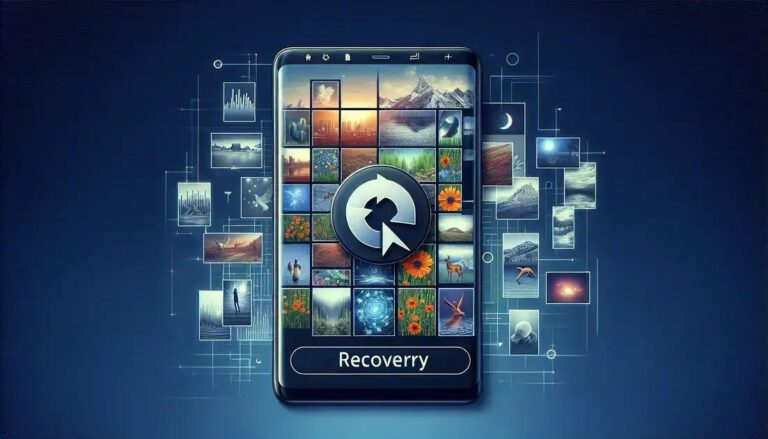Restore Deleted Photos in Just a Few Clicks
Image recovery apps have become lifesavers in our digital age, offering a glimmer of hope when precious photos seem lost forever. Imagine accidentally deleting a meaningful picture or experiencing a technical glitch. These apps provide the means to retrieve those cherished memories. But how reliable are they? Let’s dive into this intriguing world.
Ever wondered how these apps can restore deleted images? It’s like having a virtual detective at your disposal, piecing together bits of digital data to reconstruct lost photos. Each app has its own approach, making it an exciting area to explore. Who wouldn’t want to rescue their visual memories?
Before you start tapping your screen to download an app, let’s examine which ones truly stand out. You may find some surprisingly effective tools, even for the most challenging recoveries. Join me on this journey to discover the best image recovery solutions out there.
What Are Image Recovery Apps?
Image recovery apps are specialized software tools designed to retrieve lost or deleted images from various storage devices. These apps come in handy when you accidentally delete photos or experience data corruption. They scan your device’s storage to identify retrievable images, offering a lifeline for recovering valuable memories.
Many of these apps work by searching for image file remnants on hard drives, SD cards, and USB drives. They employ sophisticated algorithms to piece together fragments of lost data into a coherent picture file. This process ensures that even if an image is not immediately visible on your device, it isn’t necessarily gone for good.
There are several types of image recovery apps available: Disk Drill, a user-friendly app that supports various file formats and devices; Recuva, known for its quick and efficient scans of digital storage; and PhotoRec, a free and open-source solution highly rated for its powerful recovery capabilities. Each tool has unique features, so it’s important to choose one that meets your needs.
When choosing an app, consider the device you need to scan, the file types you wish to recover, and whether you prefer a free tool or a premium service. Many paid options come with enhanced features like deep scans and more comprehensive file support. Remember to act quickly after losing images as continued use of the storage device can overwrite lost data.
How Image Recovery Apps Work
Understanding how image recovery apps work can help you recover lost photos more effectively. These apps employ scanning technologies to search storage media for trace data. The data is typically stored in memory clusters, and even deleted files often leave behind residual data fragments. Image recovery apps use complex algorithms to locate these fragments and reassemble them into complete images.
The recovery process generally involves several steps. First, the app performs a quick scan to identify recoverable files. This scan gives you an overview of images that can be restored. Sometimes, this is sufficient to retrieve the photos you need, but for more thorough searches, a deep scan can be initiated. Deep scans take longer but probe every memory block in use, increasing the likelihood of recovering older or more thoroughly deleted files.
Let’s consider some popular apps that illustrate how these processes work. EaseUS Data Recovery Wizard is known for its user-friendly interface and deep scan capabilities, which can even recover files from formatted drives. Stellar Photo Recovery focuses on recovering photos as well as videos, making it ideal for multimedia retrieval. Lastly, Wondershare Recoverit offers comprehensive file format support and provides both free and paid versions, so you can choose based on your needs.
Proper use of these applications can significantly improve your chances of recovery, but it’s essential to avoid using the affected storage device until you attempt recovery. Continued use could overwrite critical data, which makes recovery impossible. Understanding how these apps function helps you leverage their full potential and restore your valuable images effectively.
Top Image Recovery Apps You Should Try
When it comes to recovering lost or deleted images, selecting the right app is crucial. Here are some top image recovery apps that can help you retrieve your valuable photos efficiently.
1. Disk Drill: Known for its intuitive interface, Disk Drill makes image recovery straightforward for everyone. It offers a free version with basic recovery options and a paid version for more advanced features like deep scans and recovery vault protection. Disk Drill supports a wide range of file systems, making it versatile for various storage devices. Ideal for both beginners and tech-savvy users, you can find it online for download.
2. Recuva: Developed by Piriform, Recuva is renowned for its simplicity and efficiency. Perfect for those new to data recovery, Recuva offers a quick scan for recently deleted files and a deep scan for recovering files from formatted or damaged disks. While there is a basic free version available, the professional version offers automatic updates and premium support.
3. Stellar Photo Recovery: This app is perfect for photographers and videographers due to its capability to recover not just photos but also videos. Stellar Photo Recovery supports a variety of file formats and devices and offers advanced settings to recover image files with high precision and quality. It’s a paid app, but offers a trial version to assess its capabilities before purchase.
4. PhotoRec: An open-source tool known for its powerful recovery features, PhotoRec can recover images from hard disks, CD-ROMs, and lost pictures from digital camera memory. Being open-source, it’s free to use, although not as visually intuitive as some paid options. It’s excellent for users who are comfortable with command-line interfaces.
Choosing the right app depends on your specific needs and technical comfort level. With these options, you’re armed with reliable tools to recover your images effectively.
Common Issues and Solutions
When using image recovery apps, users may encounter several common issues. Thankfully, there are solutions to tackle these problems effectively. Here are some of the most frequent challenges and their respective solutions.
1. Incomplete Recovery: Sometimes, files recovered are incomplete or corrupted. This typically happens when the data has been overwritten. To resolve this, use the deep scan feature offered by most recovery apps, which can retrieve older files or more thoroughly check the device storage. Tools like Disk Drill and Stellar Photo Recovery excel in such situations due to their advanced scanning options.
2. Unable to Find Specific File Types: Some recovery apps might not support all file formats. If your specific file type is not retrieved, ensure that the app you are using supports it. Selecting apps with extensive file type support, like Wondershare Recoverit, can increase the chances of successful recovery.
3. Limited Free Version: Many free versions of image recovery apps offer limited features, making it difficult to assess the app’s full capabilities. Investing in the full version can unlock additional features and support, which might be essential for recovering complex file structures. Consider the upgrade if you find yourself in need of comprehensive recovery options.
4. Storage Device Not Recognized: This issue usually arises due to compatibility issues or malfunctions in the recovery software. Ensure that your device is properly connected and that the recovery app is up-to-date. Sometimes, trying a different USB port or cable can solve connectivity problems.
5. Slow Recovery Process: Large amounts of data or deep scans can cause delayed recovery processing. Patience is crucial here, as terminating the recovery process midway can result in incomplete data retrieval. To speed up the process, close unnecessary applications on your device.
FAQ – Frequently Asked Questions About Image Recovery Apps
What are image recovery apps used for?
Image recovery apps are designed to retrieve lost or deleted photos from various storage devices like hard drives, SD cards, and USB sticks.
Can image recovery apps restore formatted data?
Yes, many apps like Disk Drill and PhotoRec offer deep scan features that can recover images from formatted disks by piecing together data fragments.
Are free versions of image recovery apps effective?
Free versions can be useful for basic recovery needs, but they often have limitations in features and file size. Upgrading to a paid version may provide better results.
What should I do if my device is not recognized by the recovery app?
Ensure your device is properly connected and recognized by your system. Updating the app and trying different USB ports or cables might help solve connectivity issues.
How can I improve the success of recovering my images?
Avoid using the storage device after deletion as new data can overwrite recoverable files. Use deep scan features for a thorough search of your lost images.
Which file formats are typically supported by image recovery apps?
Most recovery apps support standard image formats like JPEG, PNG, and RAW, but it’s crucial to check if your specific file format is included in their list.






